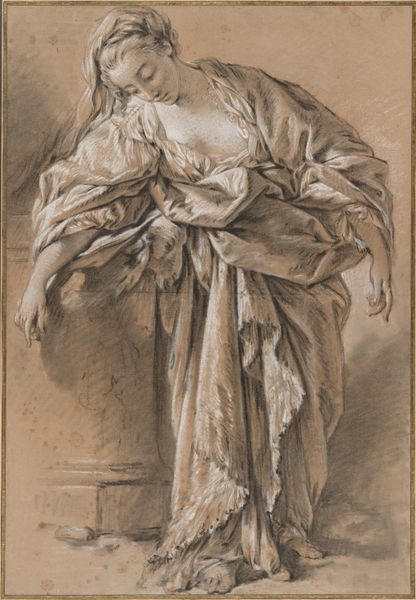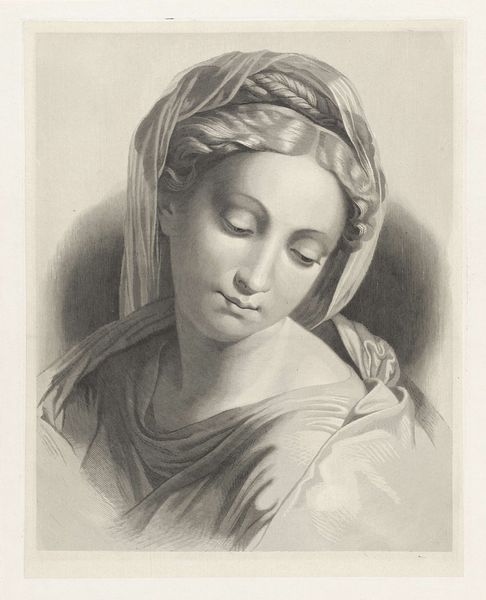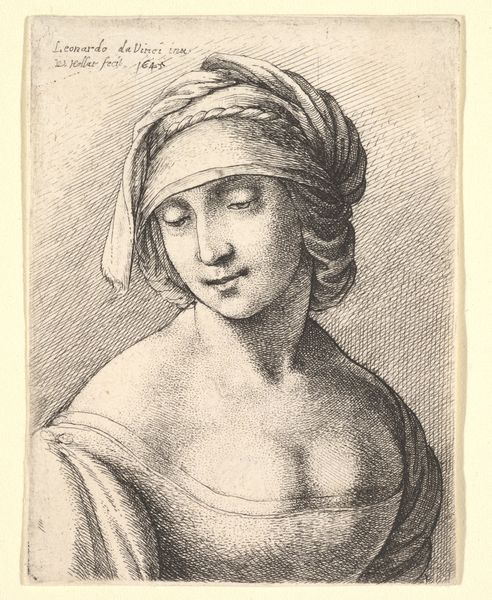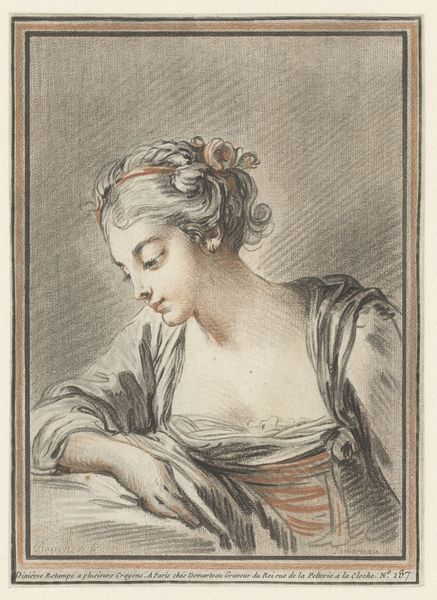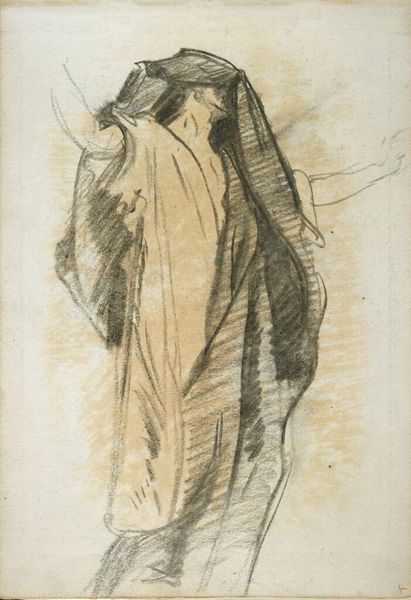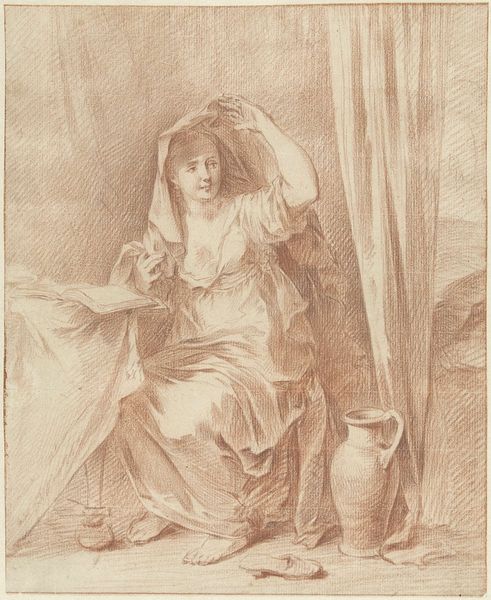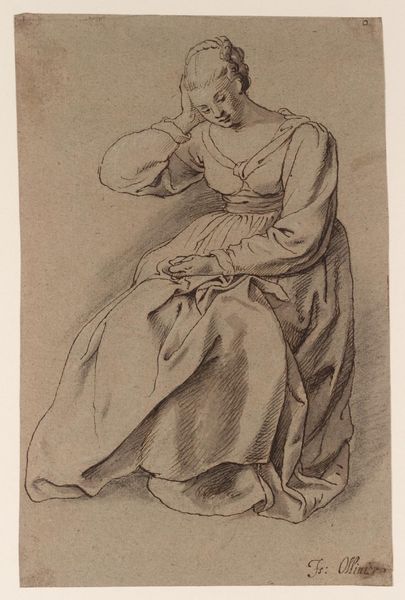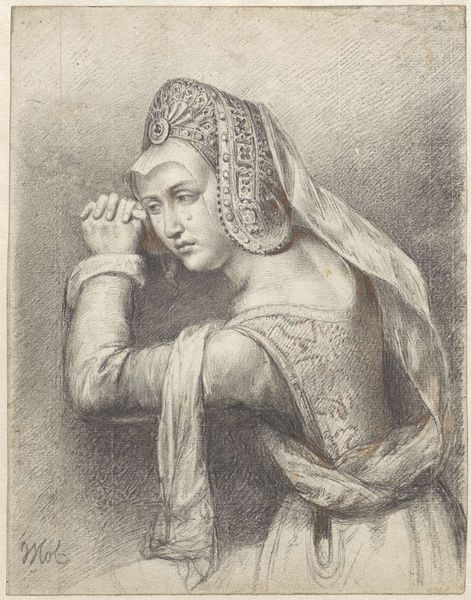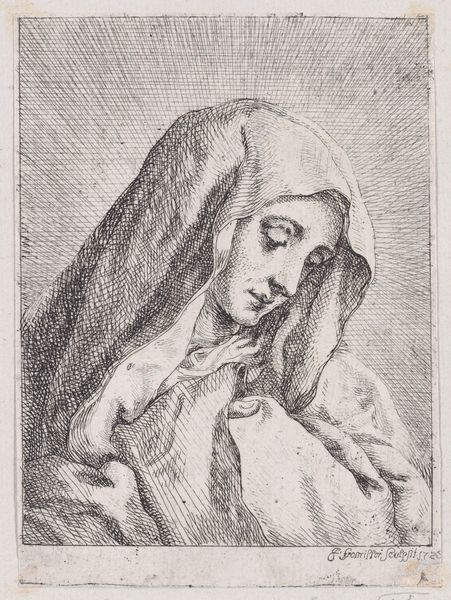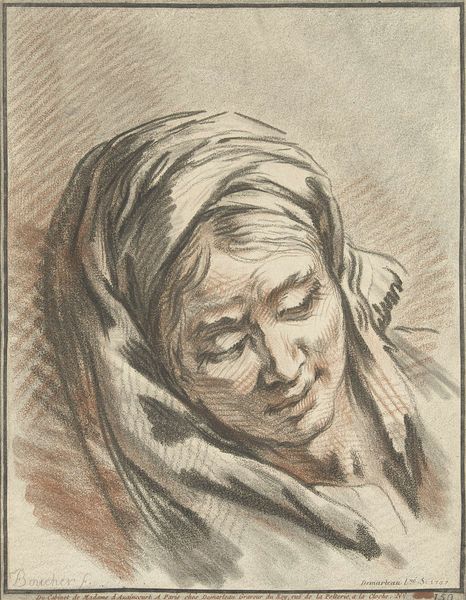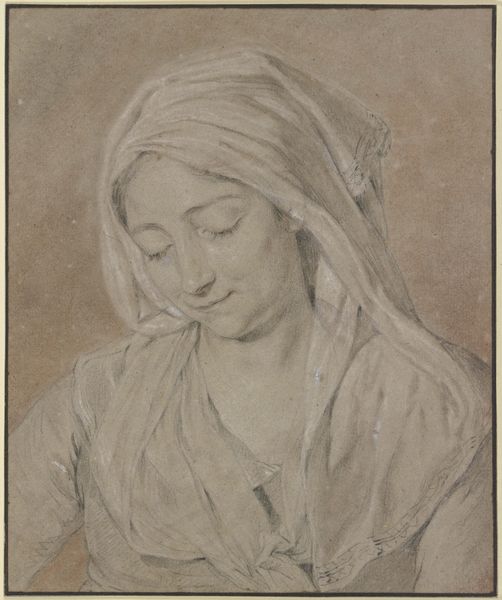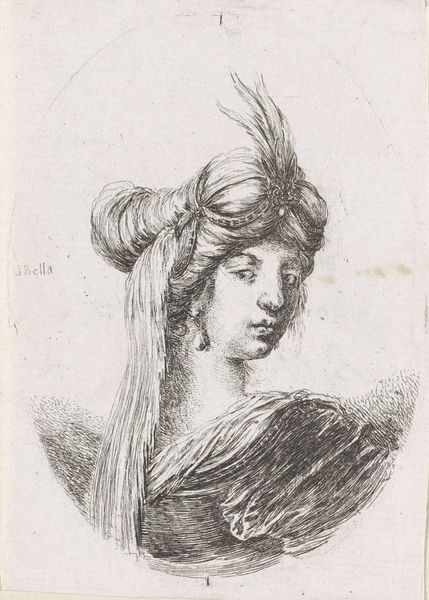
drawing, charcoal
#
portrait
#
drawing
#
charcoal drawing
#
form
#
line
#
portrait drawing
#
charcoal
#
rococo
Dimensions: height 330 mm, width 251 mm
Copyright: Rijks Museum: Open Domain
Curator: Gilles Demarteau's "Head of a Woman with a Drape around her Head," dating roughly from 1732 to 1776, immediately draws the eye. The work, crafted in charcoal, is remarkable. Editor: There’s a quiet tenderness in it. The subject's downward gaze and the soft rendering of the drapery... it all conveys such a gentle, contemplative mood. Curator: Demarteau was an engraver who often reproduced drawings by artists like François Boucher, known for his contributions to the Rococo movement. These prints gained significant popularity. One can easily envision their presence within bourgeois domestic settings, reflecting and reinforcing the era's aesthetics and social values. Editor: Interesting point about domestic settings. Thinking about gender and its performance, there is something compelling in how this drawing speaks to notions of idealized femininity and modesty through both the composition and stylistic conventions. I am struck by how a contemporary audience might reflect on it. Is the figure’s veiled presentation an exercise of control or a depiction of subjugation, filtered through a male artist's perspective, even if reproduced by Demarteau? Curator: The drape, of course, conceals and reveals, a common motif in Rococo art meant to tantalize the viewer but still within the accepted societal framework for such art. Editor: Absolutely. Consider the performative aspect – this controlled presentation becomes the source of its power. Also, the gaze avoids ours, suggesting a form of interiority or a retreat from external judgment. What tensions emerge from our desire to interpret her feelings across such a gap in time, and in light of the historical role that portraiture has had in representing power, status and even objectification? Curator: The use of charcoal creates subtle gradations of light and shadow, showcasing not just Demarteau's technical skills, but the stylistic and philosophical considerations popular among wealthy patrons. Editor: Precisely. So much conveyed through a look, a texture, a posture. It invites multiple readings. Curator: Yes, truly engaging and still offering insights into its era and beyond. Editor: Agreed. There is no closure, but so much space for meaningful questions.
Comments
No comments
Be the first to comment and join the conversation on the ultimate creative platform.
